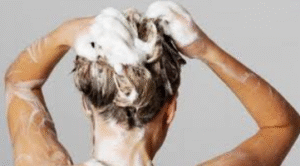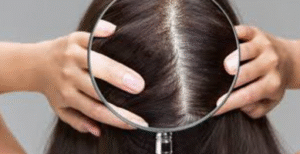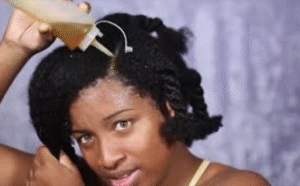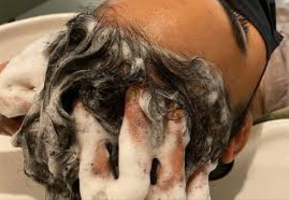Even after using pricey shampoos and conditioners, have you ever wondered why your hair still feels lifeless? The answer might be hiding right under your hair – literally. Your scalp health is the foundation of beautiful, strong hair, yet most people completely ignore this crucial aspect of their beauty routine.
Imagine your scalp as the soil in a garden, just as plants require healthy soil to flourish, so too does your hair require a healthy scalp to become robust and gorgeous. When you learn how to take care of your scalp properly, you’re investing in the long-term health and appearance of your hair.
Many people experience scalp issues like dryness, oiliness, dandruff, or irritation without realizing these problems are often preventable with proper scalp care. This comprehensive guide will show you exactly how to nurture your scalp back to its healthiest state.

Understanding Your Scalp: The Foundation of Healthy Hair
Hair follicles, sebaceous glands, blood arteries, and many nerve endings are all part of the intricate ecosystem that is your scalp, which is much more than just the skin on your head.
This delicate environment requires specific care to function optimally. The scalp produces natural oils called sebum through sebaceous glands. These oils are essential for maintaining moisture and protecting both your scalp and hair. However, when sebum production becomes imbalanced – either too much or too little – various scalp problems can arise.
Understanding Your Scalp Type
Similar to facial skin, there are various types of scalps:
- Oily Scalp: Produces excess sebum, leading to greasy hair and potential clogged follicles
- Dry Scalp: Lacks sufficient moisture, often resulting in flaking and irritation
- Sensitive Scalp: Reacts quickly to products and effects of the environment.
- Normal Scalp: Maintains balanced oil production with minimal issues
- Combination Scalp: Features different areas with varying oil production levels
Identifying your scalp type is the first step in learning how to take care of your scalp effectively. This knowledge helps you choose appropriate products and treatments that address your specific needs.

Essential Daily Scalp Care Routine
Creating a consistent daily routine is fundamental to maintaining scalp health. Although it doesn’t have to be difficult, your scalp care routine should be comprehensive and customized for your particular type of scalp.
Morning Scalp Care
- Use your fingertips to lightly massage your scalp to start your day. This simple action stimulates blood circulation, which delivers essential nutrients to hair follicles.
- Apply circular motions to your entire scalp for two to three minutes. You may need to cleanse every day if your scalp is greasy.
- However, those with dry or sensitive scalps should limit washing to every other day or even less frequently to avoid stripping natural oils.

Evening Scalp Maintenance
- Brushing your hair gently before bed helps to spread the natural oils from your scalp down the length of your hair.
- Use a boar bristle brush or wide-tooth comb to avoid damaging your hair and scalp.
- For those wondering how to take care of your scalp overnight, consider using a silk or satin pillowcase. Compared to cotton, these fabrics provide less friction, which lessens scalp irritation and hair breakage as you sleep.
Proper Scalp Cleansing Techniques
The way you choose and product you use to wash your scalp are equally important. Many people make the mistake of focusing on their hair length while neglecting the scalp during cleansing.
Pre-Cleansing Preparation
- Before applying shampoo, rinse your hair thoroughly with lukewarm water.
- Hot water can strip natural oils and irritate your scalp, while cold water may not effectively remove buildup.
- Lukewarm water opens the hair cuticles just enough for proper cleansing without causing damage.
Shampooing Technique
- Shampoo should be applied to the scalp rather than the length of your hair.
- Use your fingertips – never your nails – to massage the shampoo into your scalp using gentle circular motions.
- Focus on areas where oil and product buildup commonly occur, such as around the hairline and crown.
- The massage should last at least 60 seconds to ensure thorough cleansing and to stimulate blood circulation.
- This technique is crucial when learning how to take care of your scalp because it removes dead skin cells, excess oil, and product residue that can clog follicles.
Rinsing and Conditioning
Rinse thoroughly until the water runs clear. When applying conditioner, focus on the mid-lengths and ends of your hair, avoiding the scalp area unless you have very dry hair.
Choosing the Right Products for Your Scalp
Understanding how to select appropriate products is essential when learning how to take care of your scalp effectively.
Ingredients to Look For
- Tea Tree Oil: has antibacterial and antifungal qualities.
- Salicylic Acid: Helps exfoliate dead skin cells and unclog follicles
- Zinc Pyrithione: Effective against dandruff-causing fungi
- Ketoconazole: Powerful antifungal ingredient for persistent dandruff
- Niacinamide: Soothes inflammation and regulates oil production
- Hyaluronic Acid: Provides deep hydration without heaviness
Ingredients to Avoid
- Sulfates: can be very harsh and deplete natural oils.
- Parabens: May cause sensitivity in some individuals
- Artificial Fragrances: Common allergens that can irritate sensitive scalps
- Alcohol-based Products: Can dry out the scalp excessively
- Heavy Silicones: May cause buildup and clog follicles
Natural Scalp Care Methods
Many effective scalp treatments can be found in your kitchen. These natural techniques are inexpensive, mild, and devoid of harmful chemicals.
Oil Treatments
Frequent oil treatments are a great way to keep your scalp healthy. Different oils offer various benefits:
- Coconut Oil: Antimicrobial properties and deep moisturization
- Jojoba Oil: closely resembles sebum produced naturally and balances oil production
- Argan Oil: Packed with vitamins E and antioxidants
- Rosemary Oil: increases blood flow and could encourage the growth of hair.
- Peppermint Oil: Provides antimicrobial advantages and cooling sensation
Apply your chosen oil to the scalp, massage gently, and leave for 30 minutes to overnight before washing out. The frequency of this treatment should be once or twice per week, depending on your scalp’s needs.
DIY Scalp Scrubs
Exfoliating your scalp encourages healthy cell turnover and gets rid of dead skin cells.
Create a gentle scrub using:
- Brown sugar mixed with olive oil
- Sea salt combined with coconut oil
- Oatmeal blended with honey and water
Rinse well after applying the scrub to a damp scalp and gently massaging it for two to three minutes. For sensitive scalps, use scalp cleaners every two weeks; for regular scalps, use them once a week.
Common Scalp Problems and Solutions
Understanding how to take care of your scalp includes knowing how to address common issues that may arise.
Dandruff Management
Dandruff affects nearly half of all adults and can be caused by various factors including fungal overgrowth, sensitivity to hair products, or underlying skin conditions.
For mild dandruff, try alternating between a gentle daily shampoo and a medicated dandruff shampoo containing zinc pyrithione or ketoconazole. Use the medicated shampoo 2-3 times per week initially, then reduce frequency as symptoms improve.
Oily Scalp Control
Excess oil production can make hair appear greasy and may contribute to scalp acne or dandruff. To manage oily scalp:
- To get rid of accumulated dirt, use a clarifying shampoo once a week.
- Apply dry shampoo between washes to absorb excess oil.
- Avoid over-washing, which can trigger increased oil production
- Choose lightweight, oil-free styling products
Dry Scalp Relief
Dry scalp can cause itching, flaking, and discomfort. Combat dryness by:
- Reducing washing frequency to 2-3 times per week
- Using hydrating shampoos with ingredients like glycerin or hyaluronic acid
- Applying leave-in scalp treatments with natural oils
- Using a humidifier in dry environments
Scalp Sensitivity Management
Sensitive scalps require extra gentle care. Choose fragrance-free, hypoallergenic products and patch test new items before full use. Avoid heat styling when possible and protect your scalp from sun exposure with hats or UV-protective products.

Lifestyle Factors Affecting Scalp Health
Learning how to take care of your scalp extends beyond products and treatments. Your overall lifestyle significantly impacts scalp health.
Nutrition for Scalp Health
Your scalp needs proper nutrition to function optimally. Include these nutrients in your diet:
- Omega-3 Fatty Acids: Found in fish, walnuts, and flaxseeds, these reduce inflammation
- Biotin: Present in eggs and nuts, supports healthy hair growth
- Zinc: Available in pumpkin seeds and chickpeas, helps with oil regulation
- Iron: Found in leafy greens and lean meats, prevents hair loss
- Vitamin D: Obtained through sunlight and supplements, supports follicle health
Stress Management
Chronic stress can negatively impact scalp health by disrupting hormone levels and increasing inflammation. Practice stress-reduction techniques such as meditation, yoga, or regular exercise to maintain optimal scalp conditions.
Sleep Quality
Hormone synthesis is impacted by sleep deprivation, which can also cause scalp problems. Aim for 7-9 hours of quality sleep nightly and consider using silk pillowcases to reduce friction and hair breakage.
Professional Scalp Treatments
Sometimes, learning how to take care of your scalp means knowing when to seek professional help. Dermatologists and trained scalp specialists can provide advanced treatments for persistent issues.
When to See a Professional
Consult a healthcare provider if you experience:
- Persistent itching or pain that doesn’t improve with over-the-counter treatments
- Sudden hair loss or bald patches
- Scalp lesions, sores, or unusual growths
- Severe dandruff that doesn’t respond to medicated shampoos
- Signs of infection such as pus or severe redness
Professional Treatment Options
- Scalp Facials: Deep cleaning procedures that feed the scalp with essential nutrients and get rid of accumulated dirt
- Microneedling: Stimulates blood flow and may promote hair growth
- Light Therapy: Uses specific wavelengths to reduce inflammation and stimulate follicles
- Prescription Treatments: Stronger medications for severe scalp conditions
Seasonal Scalp Care Adjustments
Your scalp’s needs change with the seasons and adjusting your routine accordingly is part of knowing how to take care of your scalp year-round.
Winter Scalp Care
Indoor heating and cold temperatures might cause your scalp to become dry. During winter months:
- Use more intensive moisturizing treatments
- Reduce washing frequency if possible
- Protect your scalp from cold winds with hats
- Consider using a humidifier indoors
Summer Scalp Care
Hot weather and increased sun exposure require different care:
- Apply products for your scalp that have SPF protection.
- Rinse with cool water after swimming in chlorinated pools
- Drink plenty of water to promote scalp health from inside.
- Consider lighter oils that won’t feel heavy in humidity
FAQs
How often should I wash my scalp?
The frequency depends on your scalp type and lifestyle. Oily scalps may need daily washing, while dry or chemically treated scalps should be washed every 2-3 days. Those with normal scalps typically do well washing every other day. Pay attention to how your scalp feels and adjust accordingly.
Can I use face products on my scalp?
While some ingredients overlap, scalp skin is thicker and has different needs than facial skin. Scalp-specific products are formulated to work with hair follicles and the unique environment of the scalp. However, gentle, fragrance-free moisturizers can sometimes be used on very dry scalp areas.
Why is my scalp itchy even after washing?
An itchy scalp after washing could indicate several issues: using products that are too harsh, not rinsing thoroughly enough, having a sensitivity to ingredients, or having an underlying scalp condition. Try switching to gentler products and ensure complete rinsing. If itching persists, consult a dermatologist.
Does scalp massage really help hair growth?
Scalp massage improves blood circulation to hair follicles, which can support healthy hair growth by delivering nutrients and oxygen. While massage alone won’t cure hair loss, regular massage combined with proper scalp care can create optimal conditions for hair health and may support natural growth patterns.
What’s the difference between dry scalp and dandruff?
Dry scalp produces small, dry flakes and feels tight or itchy due to lack of moisture. Dandruff typically produces larger, oily flakes and is often caused by fungal overgrowth or sensitivity to hair products. Dry scalp needs moisturizing treatments, while dandruff requires antifungal or medicated shampoos.
Conclusion
Your scalp is the foundation from which strong, vibrant hair grows, and neglecting this crucial area can lead to various issues that affect both your hair’s appearance and your confidence. Your scalp’s needs may change over time, and staying attentive to these changes will help you maintain optimal health.
Start implementing these scalp care practices today, and you’ll be on your way to healthier hair and a more comfortable, confident you. Your scalp – and your hair – will thank you for the attention and care you provide.



